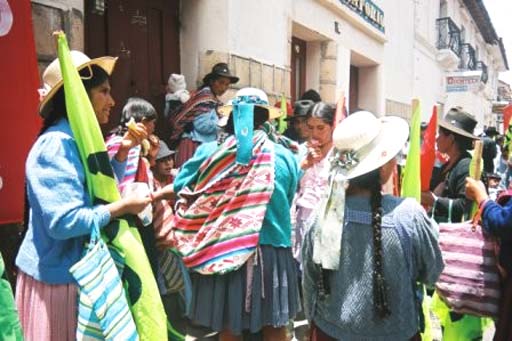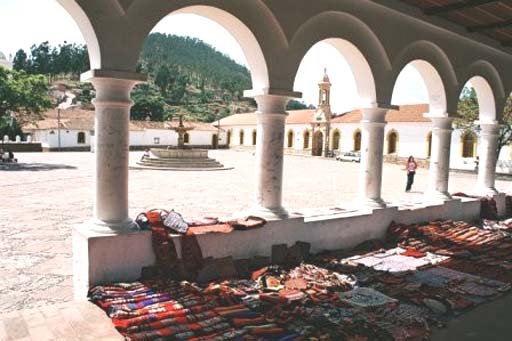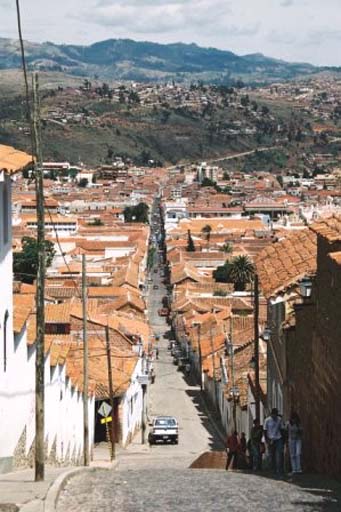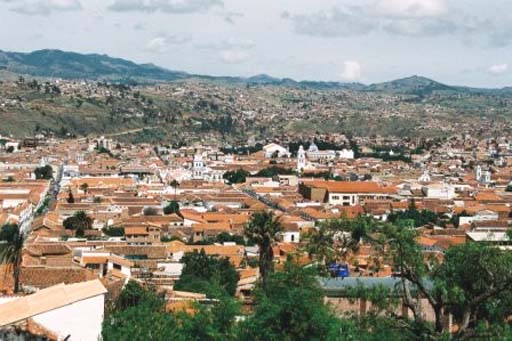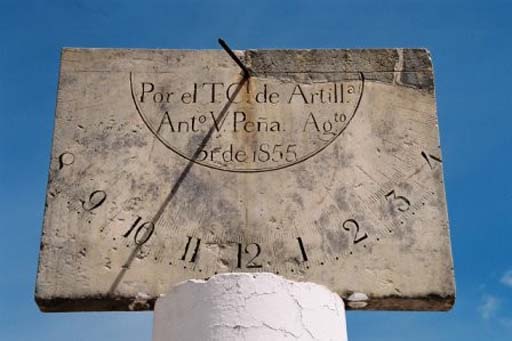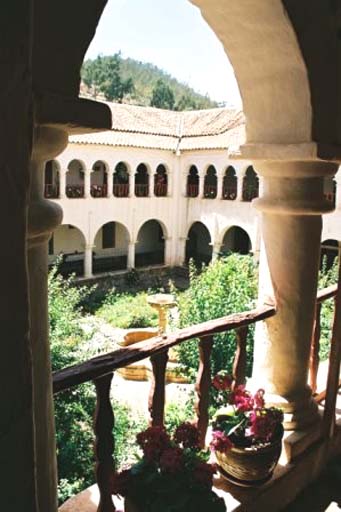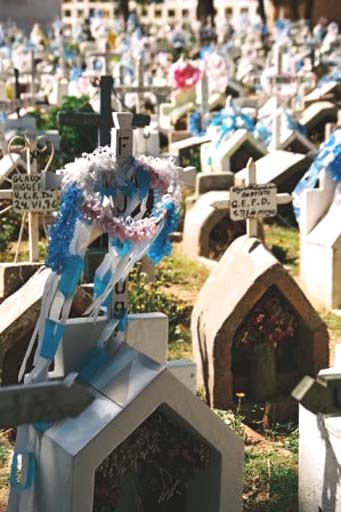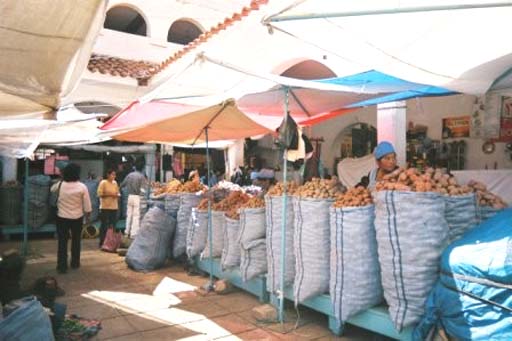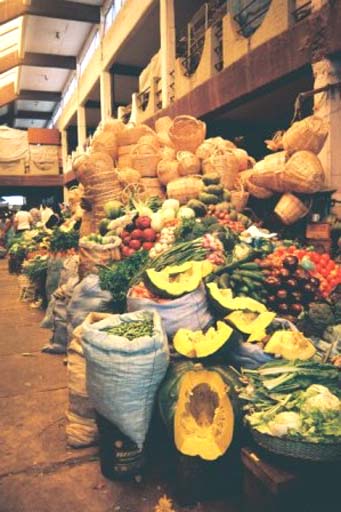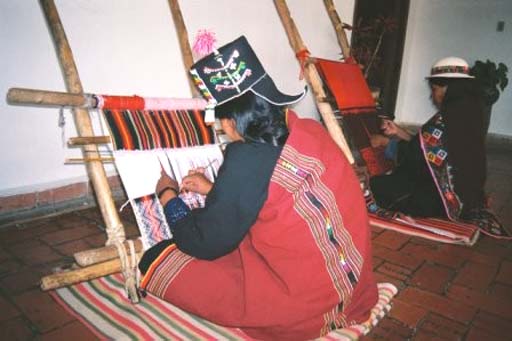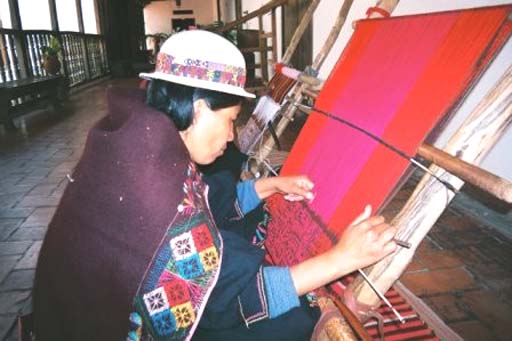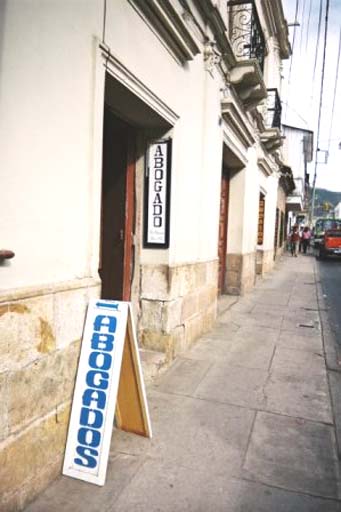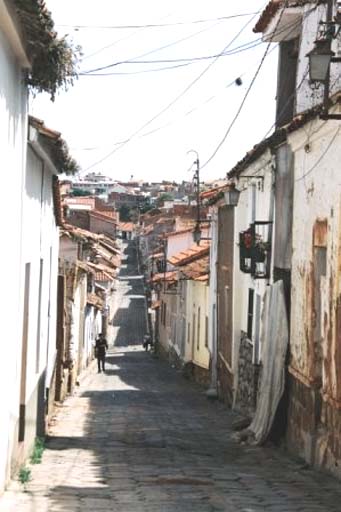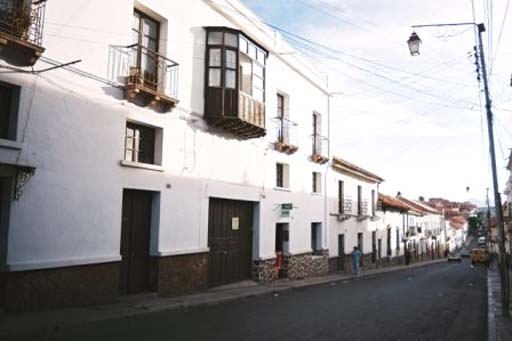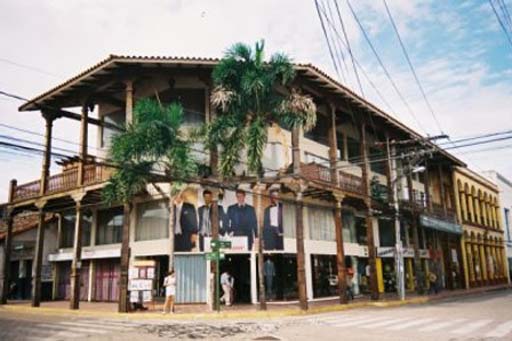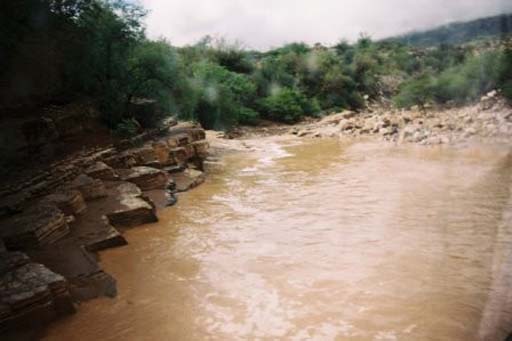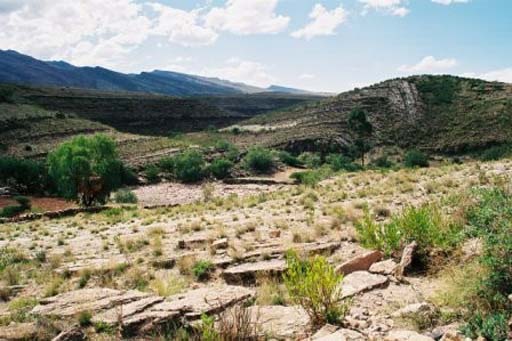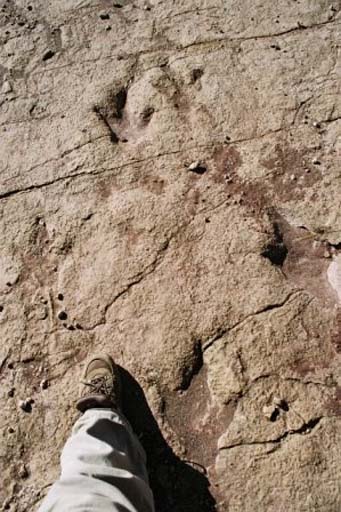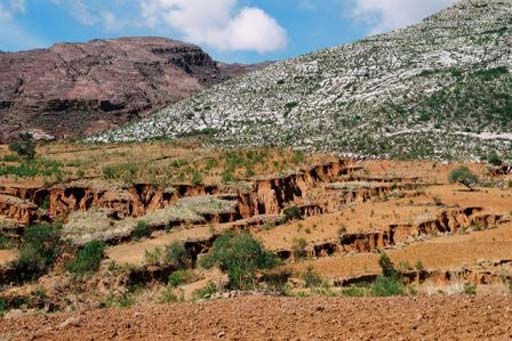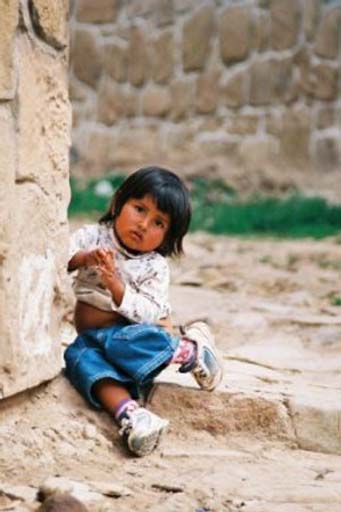Tarabuco
November 28th, 200527 November 2005 (Sunday) – Sucre to Potosi, Bolivia
Tarabuco is a tiny town, about 1.5 hours away from Sucre. Now, with quite a handful of tourist buses departing to visit its Sunday market, it has unfortunately been transformed a little. Near the plaza, the locals had lain down blankets, selling the same touristy artesania products, like everywhere else. Several tourists stopped to browse through them. To me, this is NOT the market we had come to see. So, I walked away, turning into different alleys to find the produce market.
I came upon a lane of potato sellers. Gosh, the variety of potatoes is truly mind-boggling!! Asians are not quite potato-eaters, so to me, potatoes are all the same. But here, there are so many different types! The lane was crowded with shoppers and sellers and people sitting around, presumably selling but really doing nothing. Next to this lane was the entrance to the produce market. Ah… delightful delightful delightful.
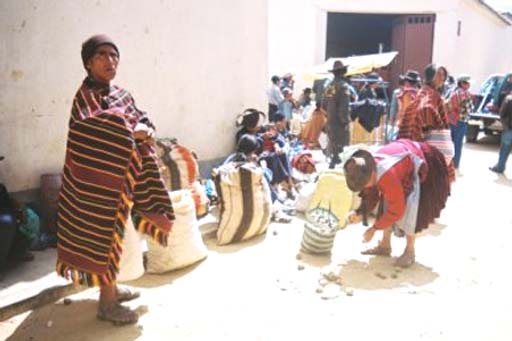

The Tarabuco men and women wear this curious-looking hat, almost shaped like a Spanish conquistador’s helmet. It is made from black leather, with little colourful beads hanging from the front and the back curved portions. There is another hat common amongst the women… that hat is cylinder-shaped, with a curved-out tail at the end, and in front, tassels of beads, like bangs of the hair and with an elaborate design made from sequins and beads above these threads.
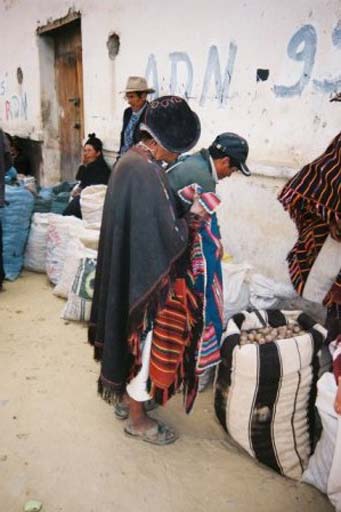

The men wear a kind of big poncho with horizontal lines of yellow, orange, etc… running across. Some of them wear a smaller kind of poncho, where the front just ends at around the chest area. This smaller poncho would have the Tarabuco fine weavings. The women wear mainly black blouses and skirts with red embroideries at the hemline. Many of them wrap themselves tightly in a thick blanket, of black or dark red colour, with light-coloured trimmings. The beautiful fine weavings are weaved into small bags where some men and women carry… perhaps, to carry money, or coca leaves.
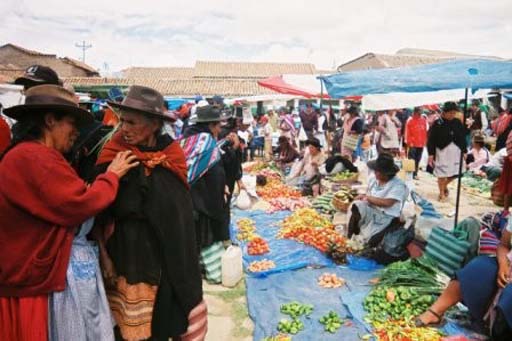
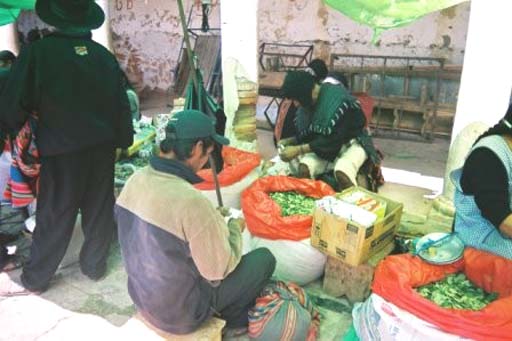
It was such a brilliant sight to see these locals dressed in their very interesting traditional costumes, wandering around normally, doing their grocery shopping. To be honest, quite a huge number of them are very old, almost ancient. I have a feeling the younger ones depart from Tarabuco to search for jobs elsewhere. Wolfgang later told me, they go to Argentina to find work, and they come back in jeans.
To be honest, we were given far too much time to wander around this tiny town. I found a cafe near the plaza and sat down for a cup of mate de coca. Later, Peggy and Peter from Germany joined me. Peggy had told me she found me familiar-looking. Hmmm… likewise, for me. We discussed our routes and figured we probably met each other in Ecuador. Later, I recalled that we met in Ingapirca ruins. She is going to Buenos Aires for Christmas, so we might meet each other there as well.
Upon my return to Sucre, I packed up, thanked Wolfgang, Amparo and her children profusely, and made my way to the bus terminal for my 5pm bus to Potosi. I gave them my backpack on the second floor and by the time, I returned to the first floor, they had already tossed it to the top of the bus. I hope it does not rain.
The journey to Potosi was through smooth roads, with undulating mountains and valleys to gaze at happily. Potosi is located at 4,000m above sea level. It is the biggest city of its kind in the world. I had been to higher places, but this is the first time I am staying at a city at this high altitude. I was worried about how cold I would feel tonight, wondering which position my body would be found tomorrow, frozen to death. But when we arrived, the weather was alright. I was fine in just one of my jackets.

